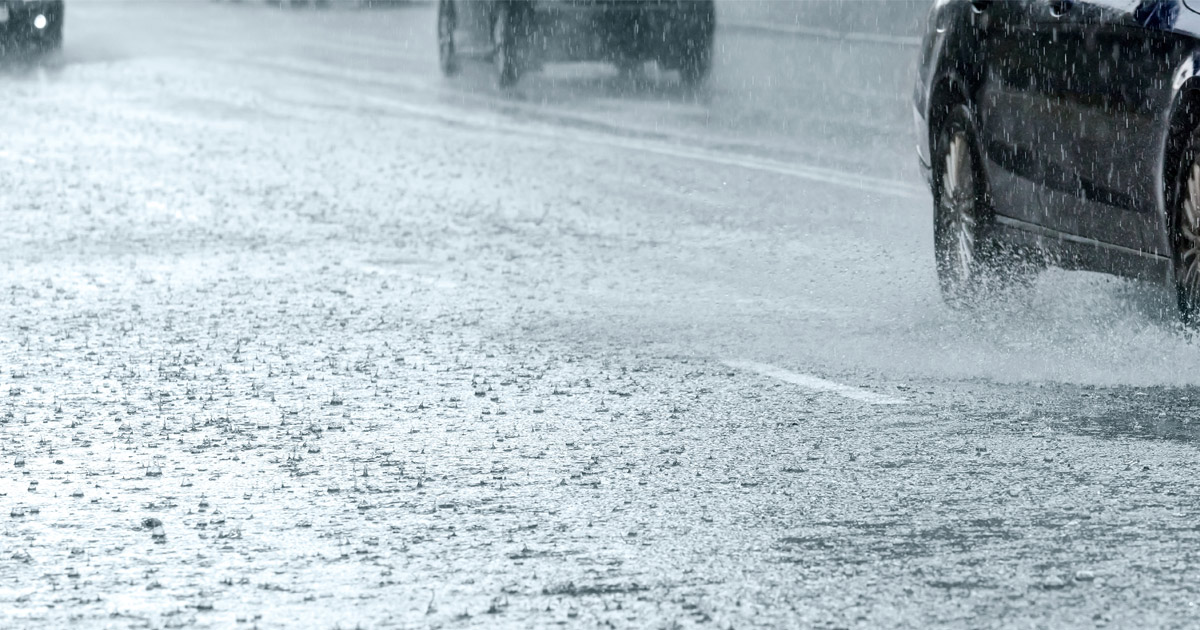The Do’s and Don’ts of Hydroplaning
April 23, 2024
Hydroplaning is a frightening experience that many drivers face during adverse weather conditions. Knowing how to handle your vehicle when confronted with hydroplaning can preserve your safety and the safety of others on the road. Our do’s and don’ts of hydroplaning offer essential information to navigate these potentially hazardous situations.
What Causes Hydroplaning?
Hydroplaning occurs when a vehicle’s tires encounter more water than they can scatter. This buildup of water between the tires and the road surface can lead to a loss of traction, causing the vehicle to slide or skid uncontrollably.
Factors that contribute to hydroplaning include:
- Heavy rain or standing water on the road
- Worn tires with insufficient tread depth
- Driving at excessive speeds in poor weather conditions
To minimize the risk of hydroplaning, keep your tires properly inflated and replace them when the tread depth becomes worn. Reducing your speed during rainy weather can also decrease the likelihood of hydroplaning.
What Kinds of Car Accidents Are Caused by Hydroplaning?
Hydroplaning can cause different types of car accidents. First, the classic spin-out occurs when a vehicle loses traction and spirals uncontrollably due to hydroplaning. This often results in collisions with other vehicles, stationary objects like trees, or roadside barriers.
Veering accidents happen when hydroplaning causes vehicles to drift sideways, leading to collisions with adjacent vehicles or objects. Hydroplaning leads to rear-end collisions when a vehicle cannot decelerate in time, striking the vehicle ahead. Finally, rollover accidents can occur when hydroplaning causes a loss of stability, resulting in vehicles flipping over. Top of Form
How Can I Avoid Hydroplaning?
While hydroplaning can occur suddenly and unexpectedly, there are proactive steps you can take to reduce the risk and potentially avoid it altogether:
- Drive at a moderate speed, especially during heavy rainfall or on wet roads.
- Keep a safe following distance from the vehicle before you to allow enough reaction time.
- Shifting into a lower gear when possible will gradually help slow down your vehicle.
- Consider replacing your tires with all-weather or winter tires for enhanced traction in wet conditions.
Adopting these preventative strategies can significantly reduce the likelihood of hydroplaning and enhance your overall safety on the road.
What Should I Do If My Vehicle Hydroplanes?
Despite your best efforts to avoid hydroplaning, it may still happen. If you are in this situation, remain calm and take the following steps to regain control of your vehicle.
- Do not panic or slam on the brakes, as this can worsen the situation by causing your vehicle to skid uncontrollably.
- Do not push down hard on the gas pedal. Ease off it gently and try to steer in the direction you want to go.
- Do not make sudden or sharp movements, as this can increase loss of traction.
- Do not overcorrect the steering wheel and keep it steady. Overcorrecting can lead to fishtailing or spinning out of control.
- Once your vehicle regains traction, continue driving cautiously at a reduced speed until you feel confident in the road conditions.
Our Baltimore Car Accident Lawyers at LeViness, Tolzman & Hamilton Advocate for Safe Driving in All Weather Conditions
If you or someone you know was involved in a car accident due to hydroplaning, contact a skilled Baltimore car accident lawyer at LeViness, Tolzman & Hamilton for a free consultation. Call 800-547-4LAW (4529) or contact us online.
We have offices in Baltimore, Glen Burnie, Lanham, and Owings Mills, allowing us to represent clients in Maryland, including those in Anne Arundel County, Baltimore County, Carroll County, Harford County, Howard County, Montgomery County, Maryland’s Western Counties, Prince George’s County, Queen Anne’s County, Southern Maryland, and the Eastern Shore, as well as the communities of Catonsville, Essex, Halethorpe, Middle River, Rosedale, Gwynn Oak, Brooklandville, Dundalk, Pikesville, Nottingham, Windsor Mill, Lutherville, Timonium, Sparrows Point, Ridgewood, and Elkridge.

